A bacterial pan-genome makes gene essentiality strain-dependent and evolvable
- PMID: 36097170
- PMCID: PMC9519441
- DOI: 10.1038/s41564-022-01208-7
A bacterial pan-genome makes gene essentiality strain-dependent and evolvable
Abstract
Many bacterial species are represented by a pan-genome, whose genetic repertoire far outstrips that of any single bacterial genome. Here we investigate how a bacterial pan-genome might influence gene essentiality and whether essential genes that are initially critical for the survival of an organism can evolve to become non-essential. By using Transposon insertion sequencing (Tn-seq), whole-genome sequencing and RNA-seq on a set of 36 clinical Streptococcus pneumoniae strains representative of >68% of the species' pan-genome, we identify a species-wide 'essentialome' that can be subdivided into universal, core strain-specific and accessory essential genes. By employing 'forced-evolution experiments', we show that specific genetic changes allow bacteria to bypass essentiality. Moreover, by untangling several genetic mechanisms, we show that gene essentiality can be highly influenced by and/or be dependent on: (1) the composition of the accessory genome, (2) the accumulation of toxic intermediates, (3) functional redundancy, (4) efficient recycling of critical metabolites and (5) pathway rewiring. While this functional characterization underscores the evolvability potential of many essential genes, we also show that genes with differential essentiality remain important antimicrobial drug target candidates, as their inactivation almost always has a severe fitness cost in vivo.
© 2022. The Author(s).
Conflict of interest statement
The authors declare no competing interests.
Figures

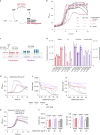
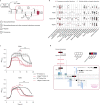
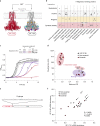
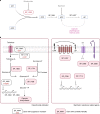



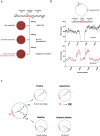




Comment in
-
Gene essentiality evolves across a pangenome.Nat Microbiol. 2022 Oct;7(10):1510-1511. doi: 10.1038/s41564-022-01231-8. Nat Microbiol. 2022. PMID: 36097169 No abstract available.
Similar articles
-
High-throughput transposon mutagenesis in the family Enterobacteriaceae reveals core essential genes and rapid turnover of essentiality.mBio. 2024 Oct 16;15(10):e0179824. doi: 10.1128/mbio.01798-24. Epub 2024 Aug 29. mBio. 2024. PMID: 39207104 Free PMC article.
-
Revealing Causes for False-Positive and False-Negative Calling of Gene Essentiality in Escherichia coli Using Transposon Insertion Sequencing.mSystems. 2023 Feb 23;8(1):e0089622. doi: 10.1128/msystems.00896-22. Epub 2022 Dec 12. mSystems. 2023. PMID: 36507678 Free PMC article.
-
Pangenome evaluation of gene essentiality in Streptococcus pyogenes.Microbiol Spectr. 2024 Aug 6;12(8):e0324023. doi: 10.1128/spectrum.03240-23. Epub 2024 Jul 16. Microbiol Spectr. 2024. PMID: 39012116 Free PMC article.
-
The bare necessities: Uncovering essential and condition-critical genes with transposon sequencing.Mol Oral Microbiol. 2019 Apr;34(2):39-50. doi: 10.1111/omi.12256. Epub 2019 Mar 1. Mol Oral Microbiol. 2019. PMID: 30739386 Review.
-
Genome-Wide Fitness and Genetic Interactions Determined by Tn-seq, a High-Throughput Massively Parallel Sequencing Method for Microorganisms.Curr Protoc Mol Biol. 2014 Apr 14;106:7.16.1-7.16.24. doi: 10.1002/0471142727.mb0716s106. Curr Protoc Mol Biol. 2014. PMID: 24733243 Free PMC article. Review.
Cited by
-
Landscape of essential growth and fluconazole-resistance genes in the human fungal pathogen Cryptococcus neoformans.PLoS Biol. 2025 May 22;23(5):e3003184. doi: 10.1371/journal.pbio.3003184. eCollection 2025 May. PLoS Biol. 2025. PMID: 40402997 Free PMC article.
-
Large diversity in the O-chain biosynthetic cluster within populations of Pelagibacterales.mBio. 2025 Mar 12;16(3):e0345524. doi: 10.1128/mbio.03455-24. Epub 2025 Feb 19. mBio. 2025. PMID: 39969192 Free PMC article.
-
Seven quick tips for gene-focused computational pangenomic analysis.BioData Min. 2024 Sep 3;17(1):28. doi: 10.1186/s13040-024-00380-2. BioData Min. 2024. PMID: 39227987 Free PMC article.
-
Diversity of antibiotic resistance gene variants at subsequent stages of the wastewater treatment process revealed by a metagenomic analysis of PCR amplicons.Front Genet. 2024 Jan 11;14:1334646. doi: 10.3389/fgene.2023.1334646. eCollection 2023. Front Genet. 2024. PMID: 38274111 Free PMC article.
-
Anti-Aflatoxigenic Burkholderia contaminans BC11-1 Exhibits Mycotoxin Detoxification, Phosphate Solubilization, and Cytokinin Production.Microorganisms. 2024 Aug 23;12(9):1754. doi: 10.3390/microorganisms12091754. Microorganisms. 2024. PMID: 39338429 Free PMC article.
References
-
- Rancati G, Moffat J, Typas A, Pavelka N. Emerging and evolving concepts in gene essentiality. Nat. Rev. Genet. 2018;19:34–49. - PubMed
-
- Shields RC, Jensen PA. The bare necessities: uncovering essential and condition-critical genes with transposon sequencing. Mol. Oral Microbiol. 2019;34:39–50. - PubMed
-
- Juhas M, Eberl L, Church GM. Essential genes as antimicrobial targets and cornerstones of synthetic biology. Trends Biotechnol. 2012;30:601–607. - PubMed
Publication types
MeSH terms
Substances
Grants and funding
LinkOut - more resources
Full Text Sources
Other Literature Sources

